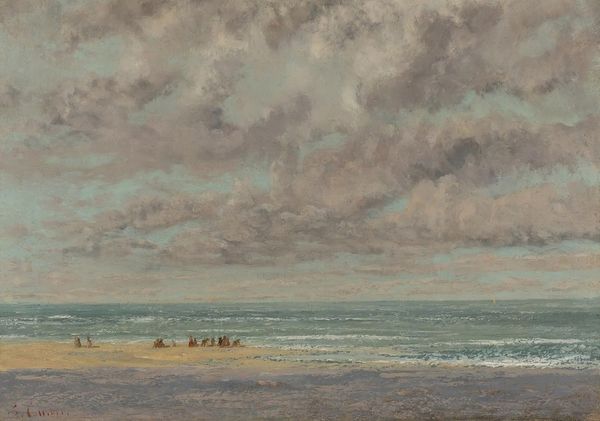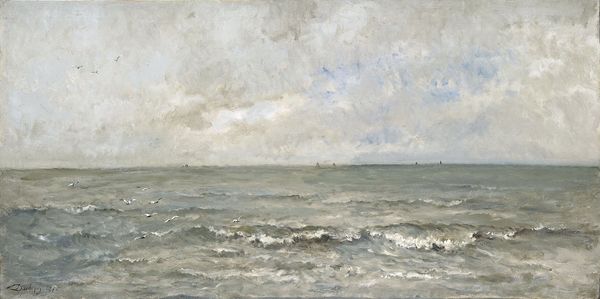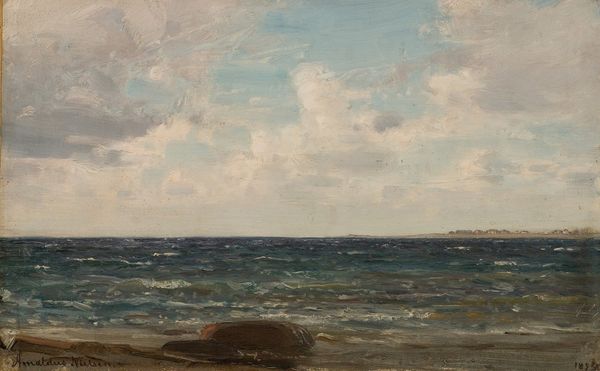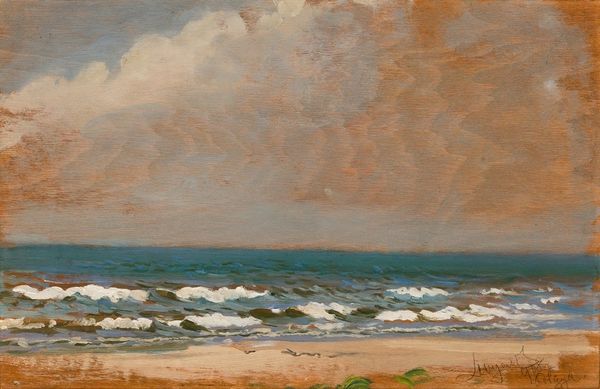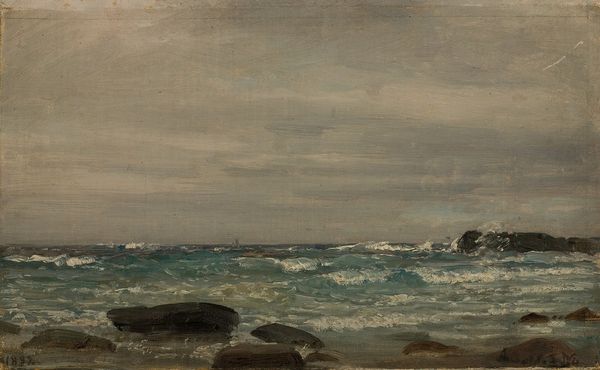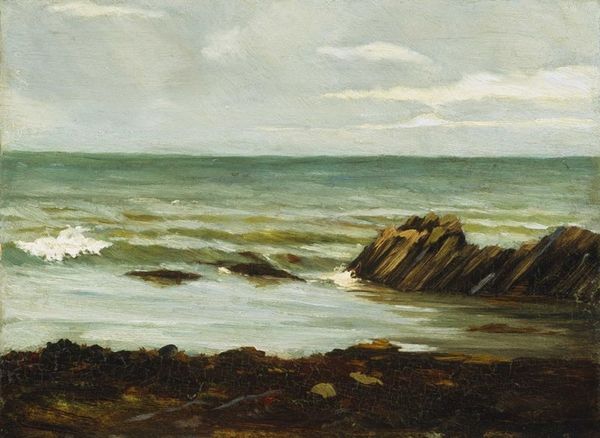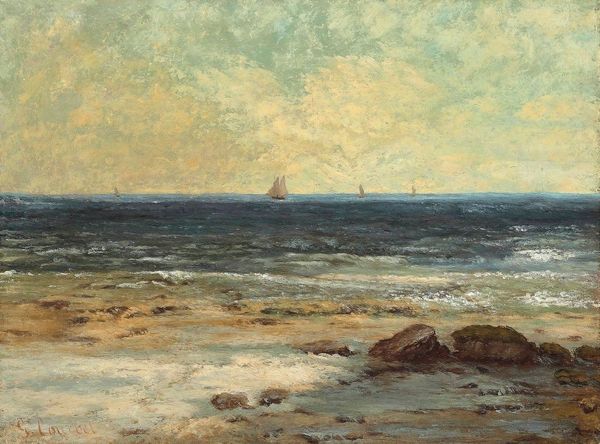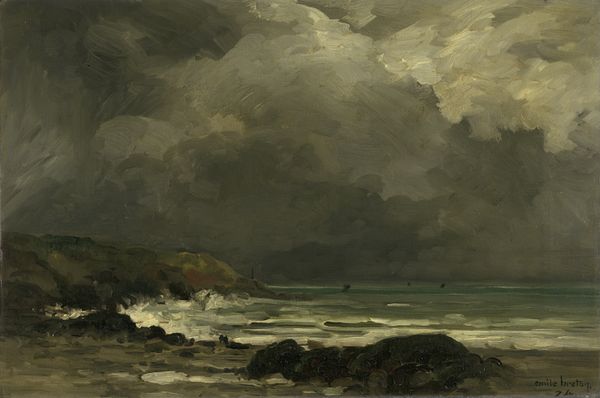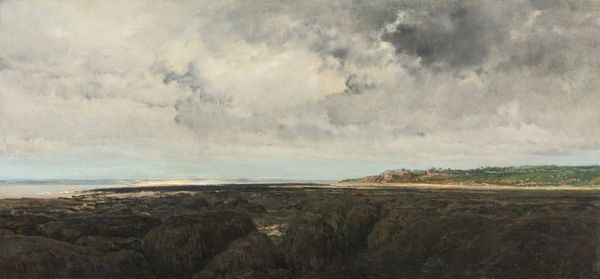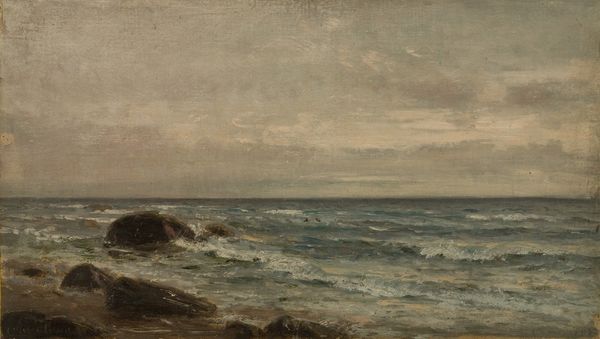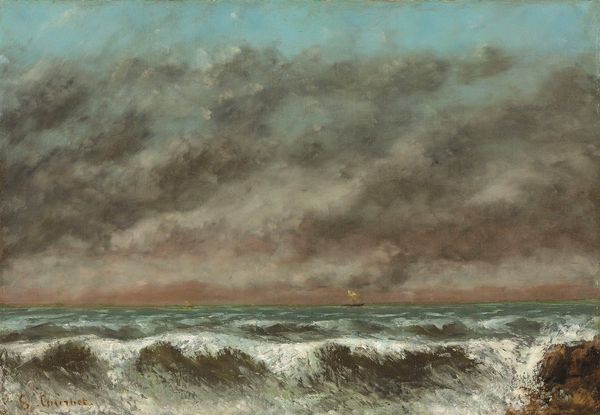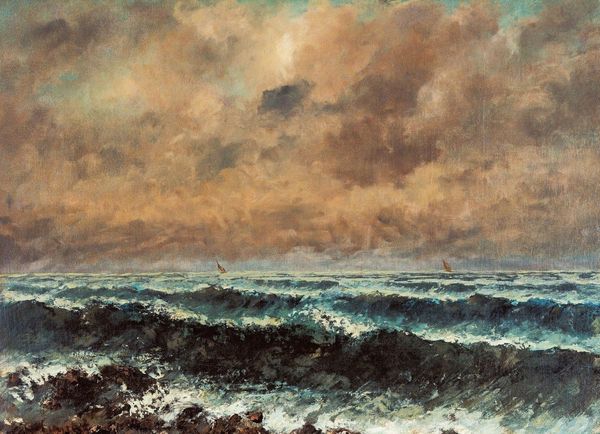
Copyright: Public Domain: Artvee
Curator: This is Gustave Courbet’s "View of a Rough Sea Near a Cliff," likely painted after 1873. A classic example of his seascapes rendered en plein-air using oil paints. Editor: The instant feeling is ominous. The gray sky presses down on the rough waves – you can almost feel the cold spray on your face. There’s such raw power here. Curator: Indeed. Courbet’s seascapes mark a departure, challenging academic conventions of history painting. He engages with the Romantic sublime, but shifts it from historical grandeur to a visceral confrontation with nature's force. We also need to consider the sociopolitical atmosphere that made history painting untenable. Editor: Exactly. His focus becomes this radical individualism – portraying nature not as backdrop, but as a protagonist. This aligns with post-revolutionary shifts questioning authority. How does this play into current socio-ecological discourses around climate change? Are these waves indifferent, or reflective of human impacts? Curator: Good questions. Viewing the piece within contemporary conversations on environmentalism and extractive capitalism opens it up to fresh analyses of landscape as more than mere backdrop but as the core issue for justice movements today. There is a sense of nature striking back to avenge the industrial revolution here. Editor: Yes! The muted palette mirrors that almost monochrome photographic feel, reminding me of the early photographs capturing working class labor. Its a shift in artistic practice mirroring class conciousness that seeks new ways of represention in ways other than heroic figure of romantic history painting Curator: Well, I appreciate how your reading makes space for broader social narratives within this natural scene, highlighting tensions between artistic autonomy and historical pressures. This encourages viewers to connect art historical study with contemporary critical thought. Editor: Absolutely, it challenges the often-decontextualized appreciation of artworks. I come away seeing an activist’s lens for a call of responsibility on social structures and art establishments to include interdisciplinary interpretations.
Comments
No comments
Be the first to comment and join the conversation on the ultimate creative platform.
